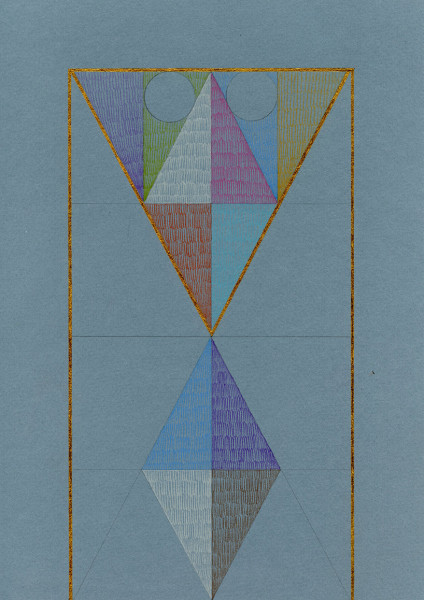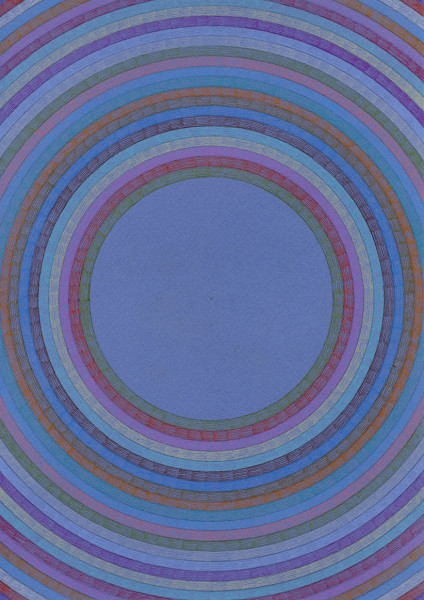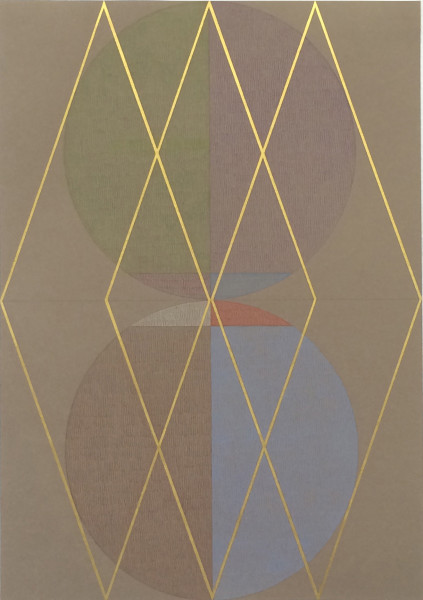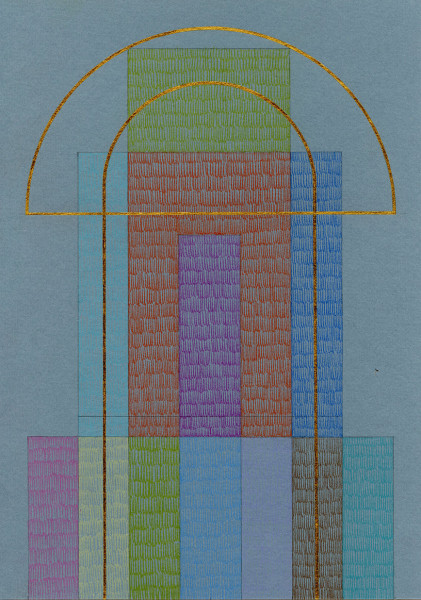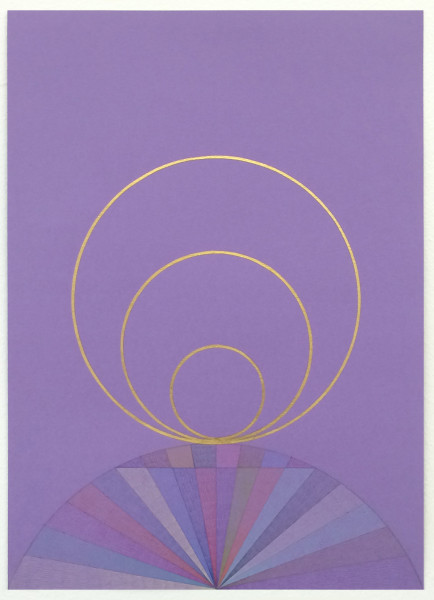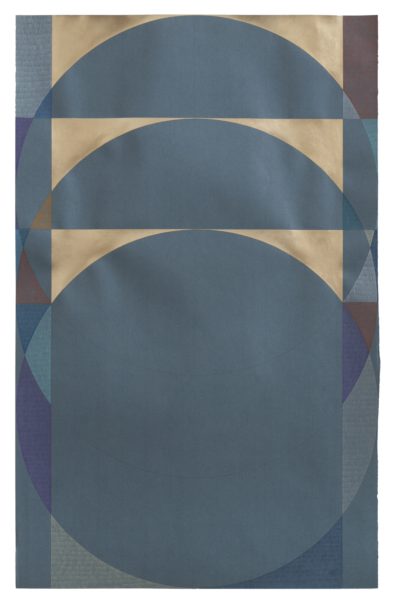Post
Claudia Wieser è nata a Freilassing (Germania) nel 1973; attualmente vive e lavora a Berlino. Dal 1993 al 1997 è stata apprendista presso un fabbro. Nel 1997 ha intrapreso il suo percorso di studi nel campo dell’arte presso l’Akademie der Bildenden Künst München nella classe di Axel Kasseböhmer e Markus Oehlen. Le sue opere sono state esposte in numerose istituzioni internazionali, tra le più recenti: Yves Saint Laurent Museum, Parigi (S, 2023); Bemis Center for Contemporary Arts, Omaha, NE; The Smart Museum of Art, Chicago; G2 Kunsthalle, Leipzig, Germania (S, 2019); Museum für Moderne Kunst, Francoforte, Germania (G, 2019); Marta Herford Museum for Art, Architecture, Design, Herford, Germania (G, 2019); Asian Culture Center, Gwangju, Corea del Sud (G, 2019); Contemporary Arts Center New Orleans, New Orleans (G, 2019); Museo D’Arte Contemporanea Villa Croce di Genova, Museum Angewandte Kunst di Francoforte e Palazzo Ducale di Genova (G, 2017); Fondazione Memmo di Roma (G, 2016); Kunsthalle di Norimberga, Hall and Ballhaus Ost di Berlino e Center for Contemporary Art di Maiorca (G, 2015); Kunsteverein di Reutlingen e Casado Santapau di Madrid (G, 2014); Petit Palais di Parigi, Galerien der Stadtd di Esslingen, Drawing Room di Londra e Signal Center for Contemporary Art di Malmö (G, 2013); KIOSK di Ghent (S, 2012); Kunsthalle di Norimberga (G, 2012); Georg Kolbe Museum di Berlino e Kunstmuseum Stuttgart (G, 2011); Drawing Center di New York (2010); Museé d’Art Contemporain di Bordeaux e Institut Français di Berlino (G, 2010); Oldenburger Kunstverein (S, 2009); Contemporary Art Museum di St. Louis, Kunsthaus Baselland di Muttenz/Basilea e Kunstverein Wolfsburg (G, 2008); Kunstbau München di Monaco (G, 2007, 2005); Art Cologne di Colonia (S, 2005); Pinakothek der Moderne di Monaco (G, 2002). Nei suoi lavori, Claudia Wieser riprende l’estetica delle opere primi modernisti in particolare di Klimt e di Paul Klee. Le sue composizioni sono ricalcate sulle regole formali sviluppate da questi due artisti nell’ambito di una teorizzazione che legava disegno, colore e stile ai caratteri di un mondo trascendente e ideale. La giovane artista tedesca si appropria di questo linguaggio fatto di linee e cromatismi e ne sviluppa uno personale, con cui compie due operazioni: da un lato torna sui temi sviluppati dalla scuola del Bauhaus indagando lo spazio architettonico e il modo in cui viene decorato, definito e riempito, dall’altro approfondisce questa ricerca interrogandosi sulla differenza che intercorre tra talento artistico e creatività. La definizione di un oggetto artistico scaturisce dalla vocazione dell’artista, dal contributo interpretativo dello spettatore ed è sempre un misto di sentimento e concettualizzazione. Penetrando il confine tra arti pure e arti applicate, i lavori di Claudia Wieser vogliono rappresentatre la sublimazione nel tratto artistico di queste quattro componenti insostituibili e irriducibili di ogni opera.
Claudia Wieser was born in Freilassing (Germany) in 1973; actually she lives and works in Berlin. From 1993 to 1997 she was apprenticed to a blacksmith. In 1997 she began her studies in the art field at the Akademie der Bildenden Künst, Munich, with Axel Kasseböhmer and Markus Oehlen. Her works were exhibited in different international institutions, among which: Yves Saint Laurent Museum, Paris (S, 2023); Bemis Center for Contemporary Arts, Omaha, NE; The Smart Museum of Art, Chicago; G2 Kunsthalle, Leipzig, Germany (S, 2019); Museum für Moderne Kunst, Frankfurt, Germany (G, 2019); Marta Herford Museum for Art, Architecture, Design, Herford, Germany (G, 2019); Asian Culture Center, Gwangju, South Korea (G, 2019); Contemporary Arts Center New Orleans, New Orleans (G, 2019); Museo D’Arte Contemporanea Villa Croce of Genoa, Museum Angewandte Kunst of Francoforte and Palazzo Ducale di Genova (G, 2017); Fondazione Memmo of Rome (G, 2016); Kunsthalle of Nuremberg, Hall and Ballhaus Ost of Berlin e Center for Contemporary Art of Maiorca (G, 2015); Kunsteverein of Reutlingen and Casado Santapau of Madrid (G, 2014); Petit Palais of Paris, Galerien der Stadtd of Esslingen, Drawing Room of London an d Signal Center for Contemporary Art of Malmö (G, 2013); KIOSK of Ghent (S, 2012); Kunsthalle of Nuremberg (G, 2012); Georg Kolbe Museum of Berlin and Kunstmuseum Stuttgart (G, 2011); Drawing Center of New York (2010); Museé d’Art Contemporain of Bordeaux and Institut Français of Berlin (G, 2010); Oldenburger Kunstverein (S, 2009); Contemporary Art Museum of St. Louis, Kunsthaus Baselland of Muttenz/Basilea and Kunstverein Wolfsburg (G, 2008); Kunstbau München of Monaco (G, 2007, 2005); Art Cologne of Cologne (S, 2005); Pinakothek der Moderne of Monk (G, 2002).
In her oeuvre Claudia Wieser resumes the aesthetics of early modernist works, in particular Klimt and Paul Klee. Her compositions follow the formal rules developed by those two artists in the context of a theorization that linked drawing, colour and style to the characteristics of a transcendent and ideal world. This young German artist has appropriated that language made up of lines and colourings and has developed a personal one of her own in which she carries out two operations: on the one hand she returns to themes developed by the Bauhaus school, investigating architectonic space and the way in which it is decorated, defined and filled; while on the other hand she proceeds with in-depth research, questioning herself on the difference between artistic talent and creativity. Definition of an artistic object is triggered by the artists vocation, by the spectators interpretive contribution, and it is always a mixture of feeling and conceptualisation. Penetrating the frontier between pure and applied arts, Claudia Wiesers oeuvre aims to represent sublimation into the artistic region of these four irreplaceable and irreducible components of each work.
In her oeuvre Claudia Wieser resumes the aesthetics of early modernist works, in particular Klimt and Paul Klee. Her compositions follow the formal rules developed by those two artists in the context of a theorization that linked drawing, colour and style to the characteristics of a transcendent and ideal world. This young German artist has appropriated that language made up of lines and colourings and has developed a personal one of her own in which she carries out two operations: on the one hand she returns to themes developed by the Bauhaus school, investigating architectonic space and the way in which it is decorated, defined and filled; while on the other hand she proceeds with in-depth research, questioning herself on the difference between artistic talent and creativity. Definition of an artistic object is triggered by the artists vocation, by the spectators interpretive contribution, and it is always a mixture of feeling and conceptualisation. Penetrating the frontier between pure and applied arts, Claudia Wiesers oeuvre aims to represent sublimation into the artistic region of these four irreplaceable and irreducible components of each work.
CW 003-14 | Untitled, 2015, gold leave, color pencils on paper, cm.29,7×21
CW 005-14 | Untitled, 2015, gold leave, color pencils on paper, cm.29,7×21
CW 001-15 | Untitled, 2015, gold leave, color pencils on paper, cm.46×33
